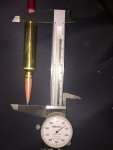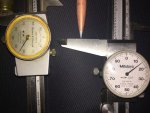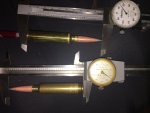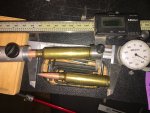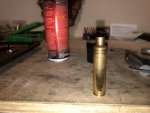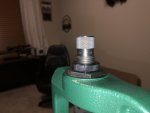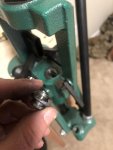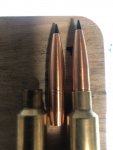Yikes. How much did you take that shell holder down? I realize that with the .588 case head, there isn't a whole lot of 'meat' to the rim of the shell holder, but seems like you musta got a little wild to get it to break off?
30 thou seems like a lot, but if there isn't enough meat to the shell holder to take material off without weakening that... dunno.
Typically, most sizing dies (F/L or body) size down to within a short distance above the extractor groove on the case. The die body usually has a little bit of a chamfer or radius on the inside edge to allow for ease of getting the case into the die if things happen to be not quite lined up when you raise the ram - i.e. so the case will be guided into the die, rather than jam up on the mouth of the die.
So effectively, that's why some dies don't always size all the way down the case head as far as we might like, and why you see people resorting to things like small base dies (that squeeze in a little tighter, a little further down) or 'ring' dies (specialty dies that size *only* that area of the case) with zero radius on the entry so they can size almost all the way to the extractor groove. That's more of a situation where the shoulder has been bumped an adequate (or more than adequate) amount, but the case still won't chamber freely due to a mis-match in the fired dimension of the case web vs. the die - most common, in my experience, when 'recycling' brass from one chamber to another in the same cartridge. One chamber might have a 'fat butt' compared to the other, and until the web gets squeezed back into place, the old brass won't play nice in the new chamber.
That 20-30 thou you want to take off the base of the die would probably just be taking from the radiused region at the mouth, which doesn't actually size the case anyway... so in *theory*, it shouldn't hurt anything. I just hate permanently modifying dies, particularly ones that aren't exactly off-the-shelf commodity items (.338LM AI, vs. say, .308 Winchester).
You might want to call the die manufacturer on Monday morning and talk to their tech support as well.

